Abstract
Natural resistance of the male urethra to gonococci has not been explained by classical immune mechanisms but could result from antibacterial properties of urine. Accordingly, we measured survival in midmorning urine of 10(7) F-62 T2 gonococci per ml by serial dilutions and plate counts. Fifteen killer urines from eight people all killed greater than 3 logs (average, 5.3), and 13 of 15 were sterilized. Fourteen nonkiller (inhibitor) urines from seven subjects allowed no growth. Killer urines were more acidic (pH 5.4 versus 6.4) and more concentrated (861 versus 717 mosmol/kg) than nonkillers. Upon addition of hydrogen ion, urea, and sodium chloride to urines and broth, pH proved to be the major killing factor, but urea and NaCl were also bactericidal. Susceptibility to urine bactericidal power did not vary with colony type (T2 versus T4) or strain (F-62 versus two fresh isolates). Killing was rapid (0.5 to 3 h) and not bacteriolytic. Escherichia coli multiplied 10-fold in urines that inhibited growth of gonococci. Thus, the bacteriostatic effect of urine may explain why gonococci do not infect the bladder and kidney during gonorrhea. The bactericidal properties of urine may contribute to resistance against gonococcal urethritis.
Full text
PDF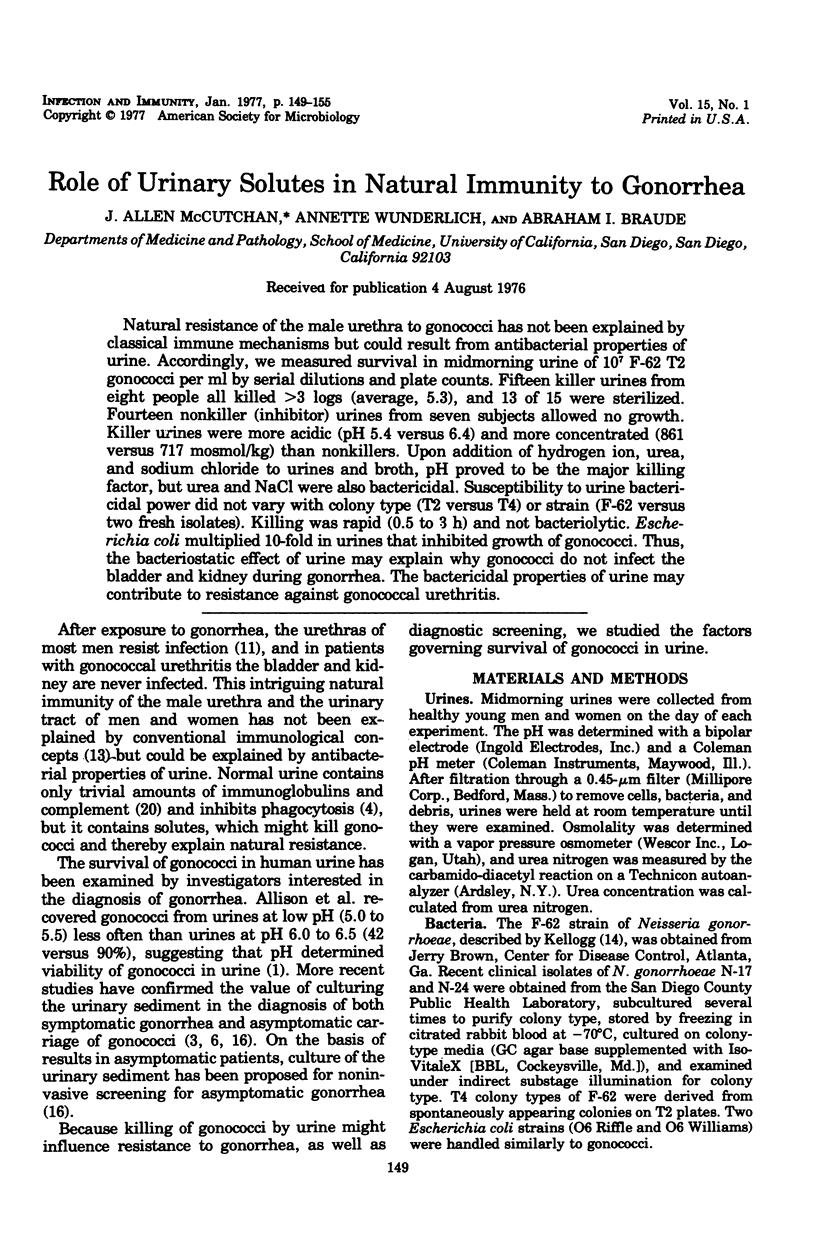
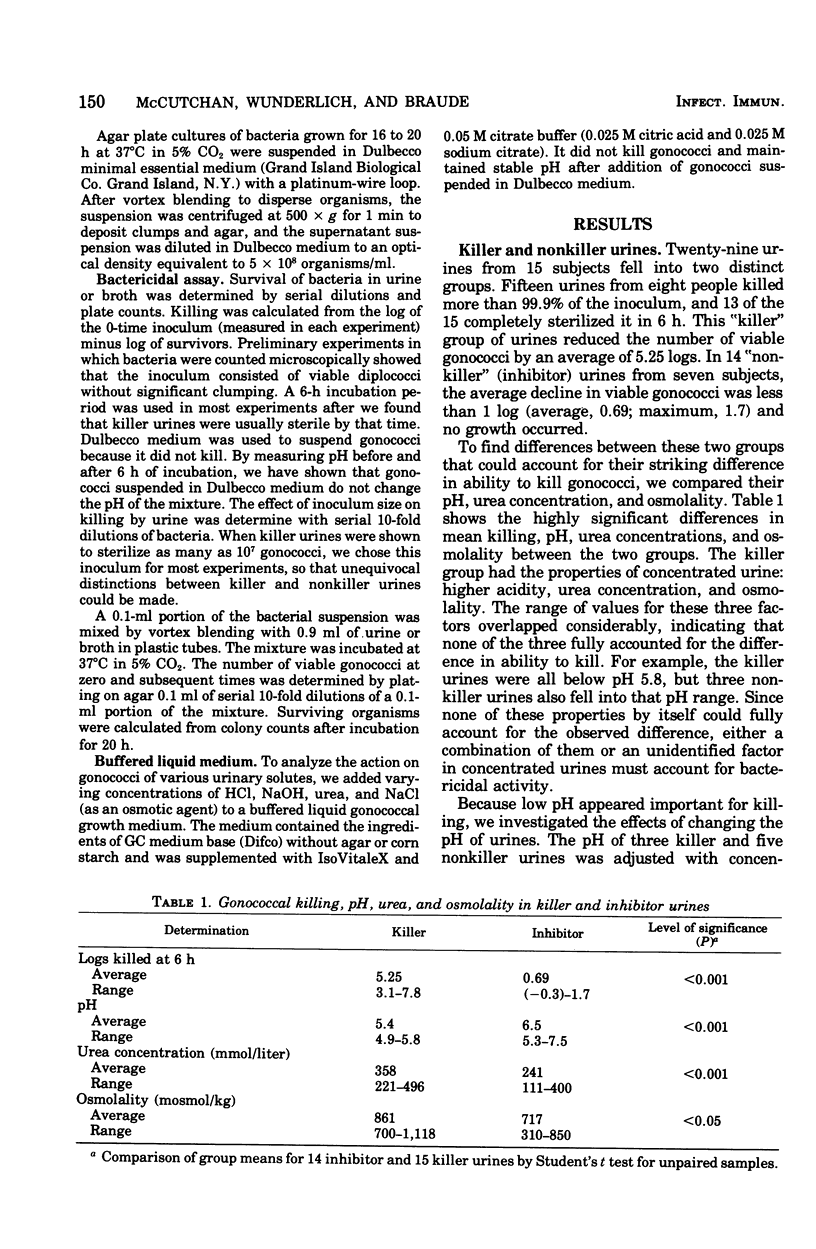
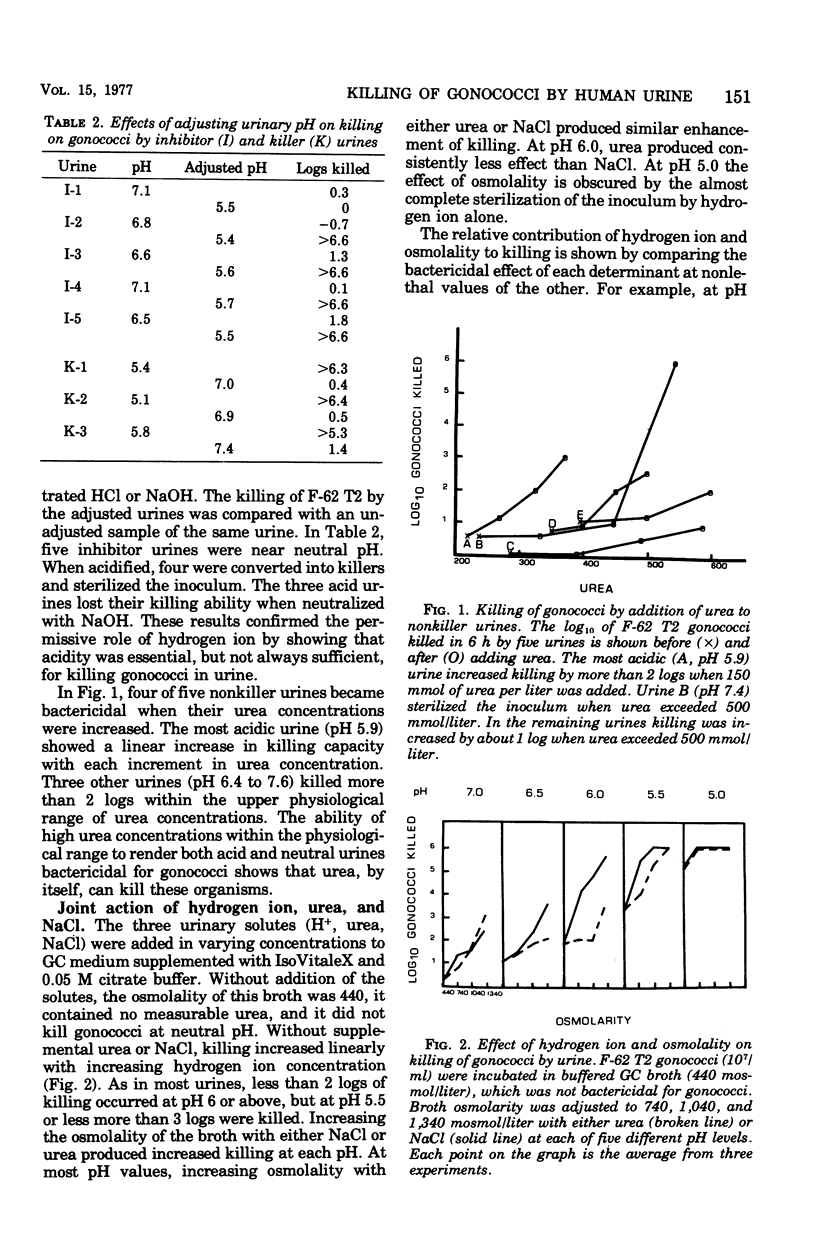
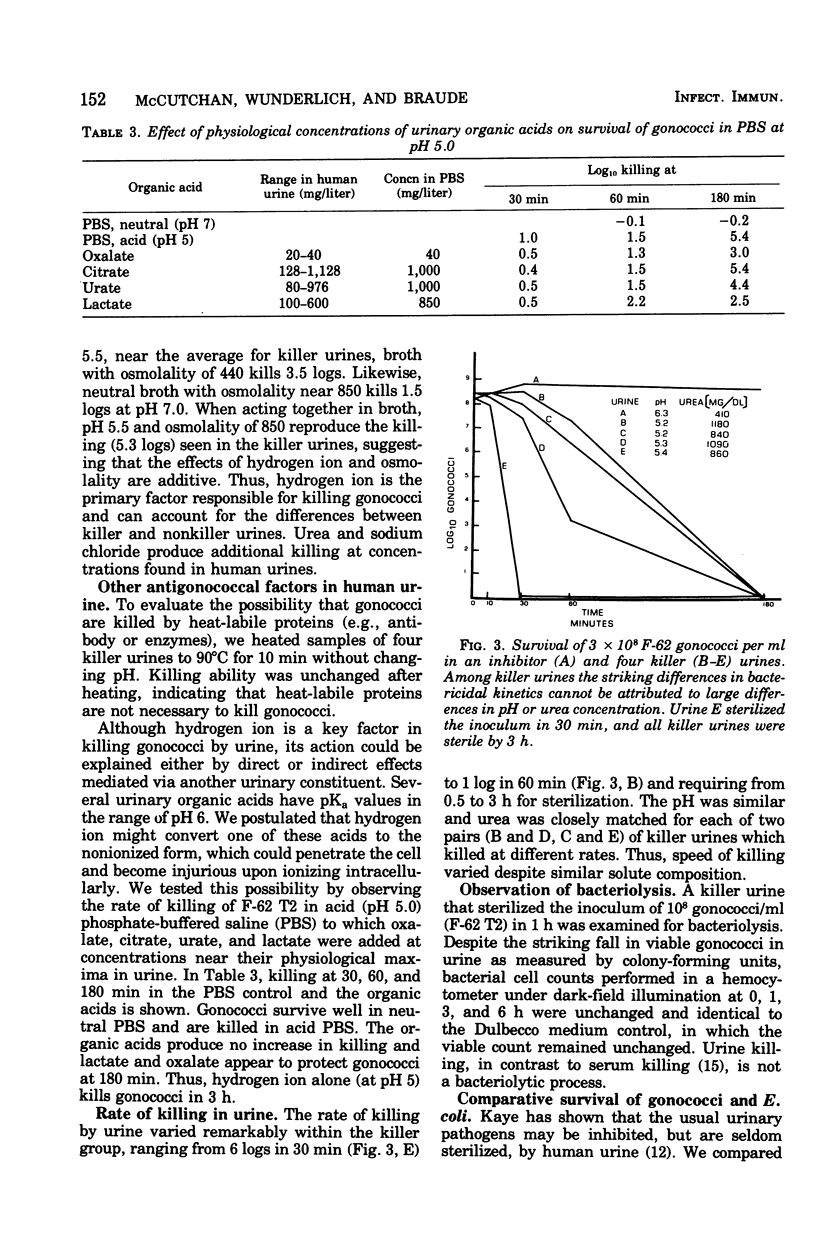
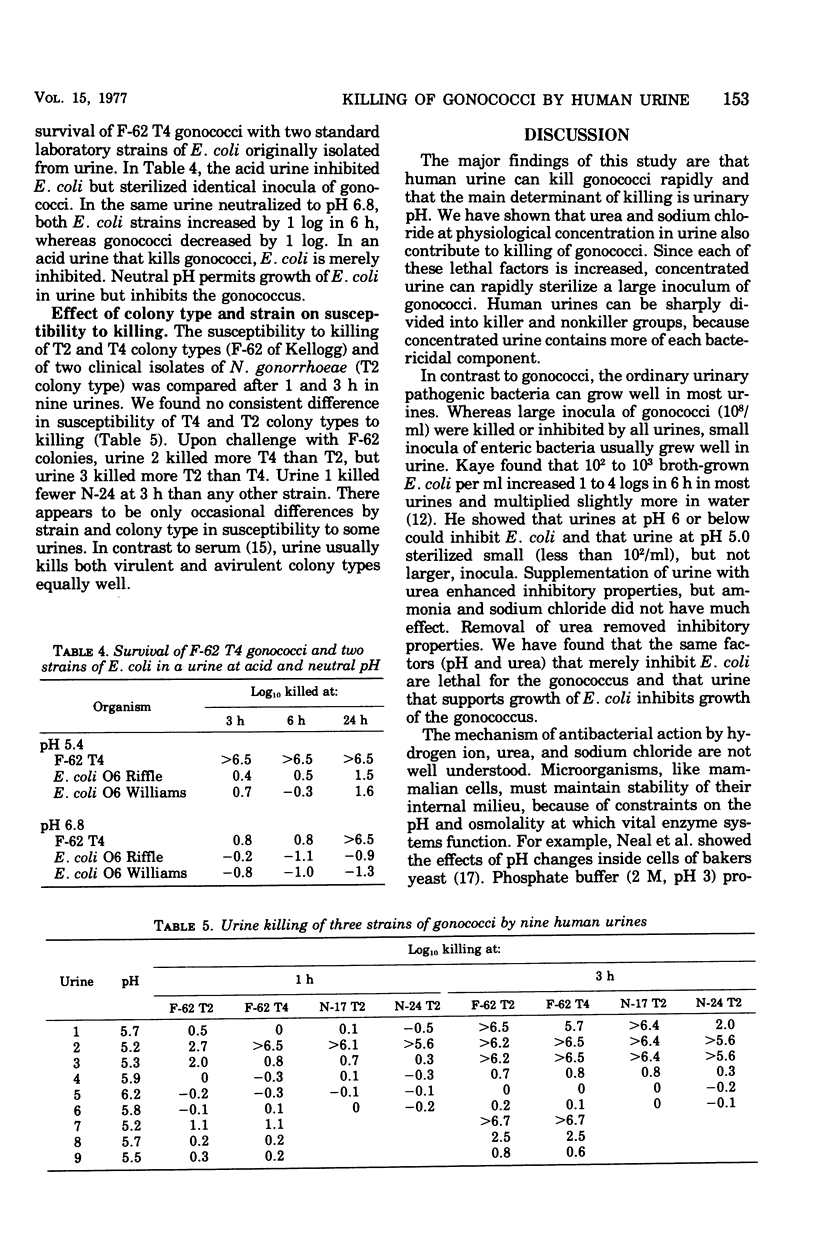
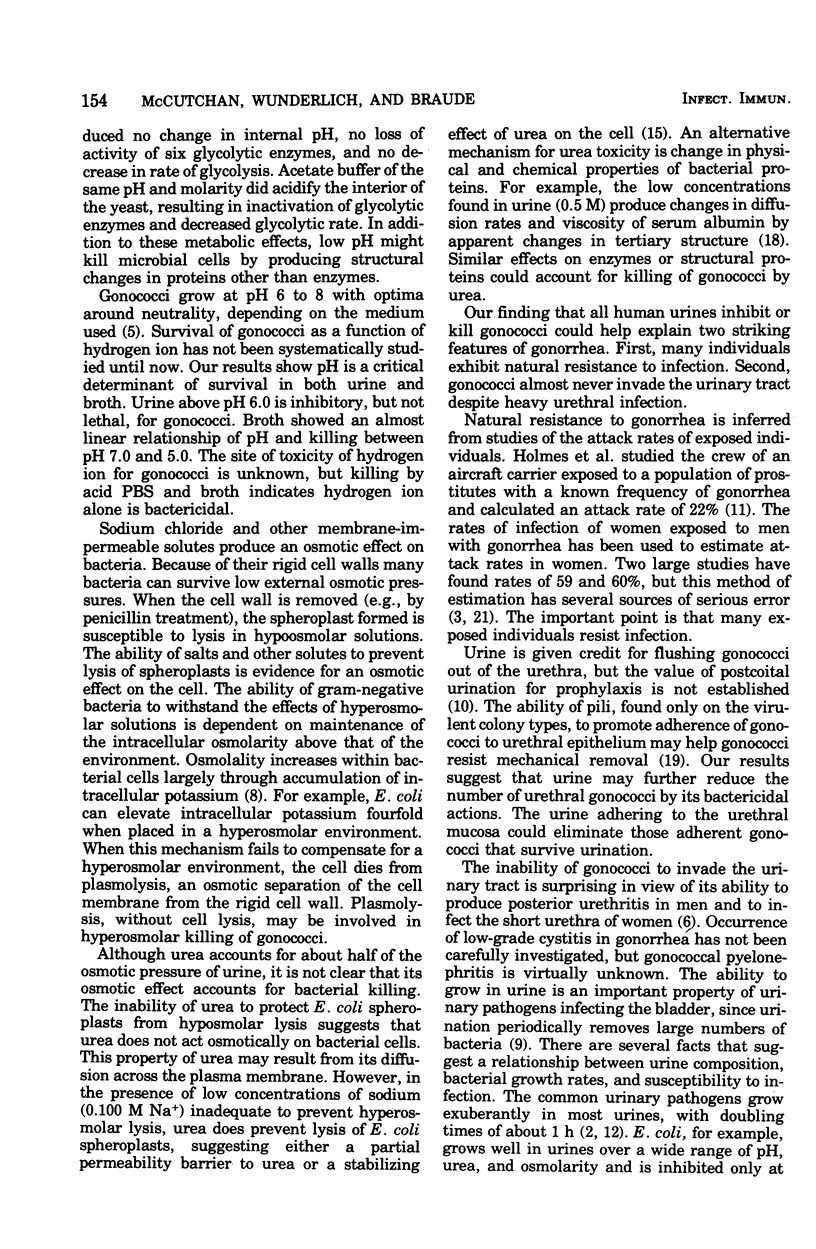
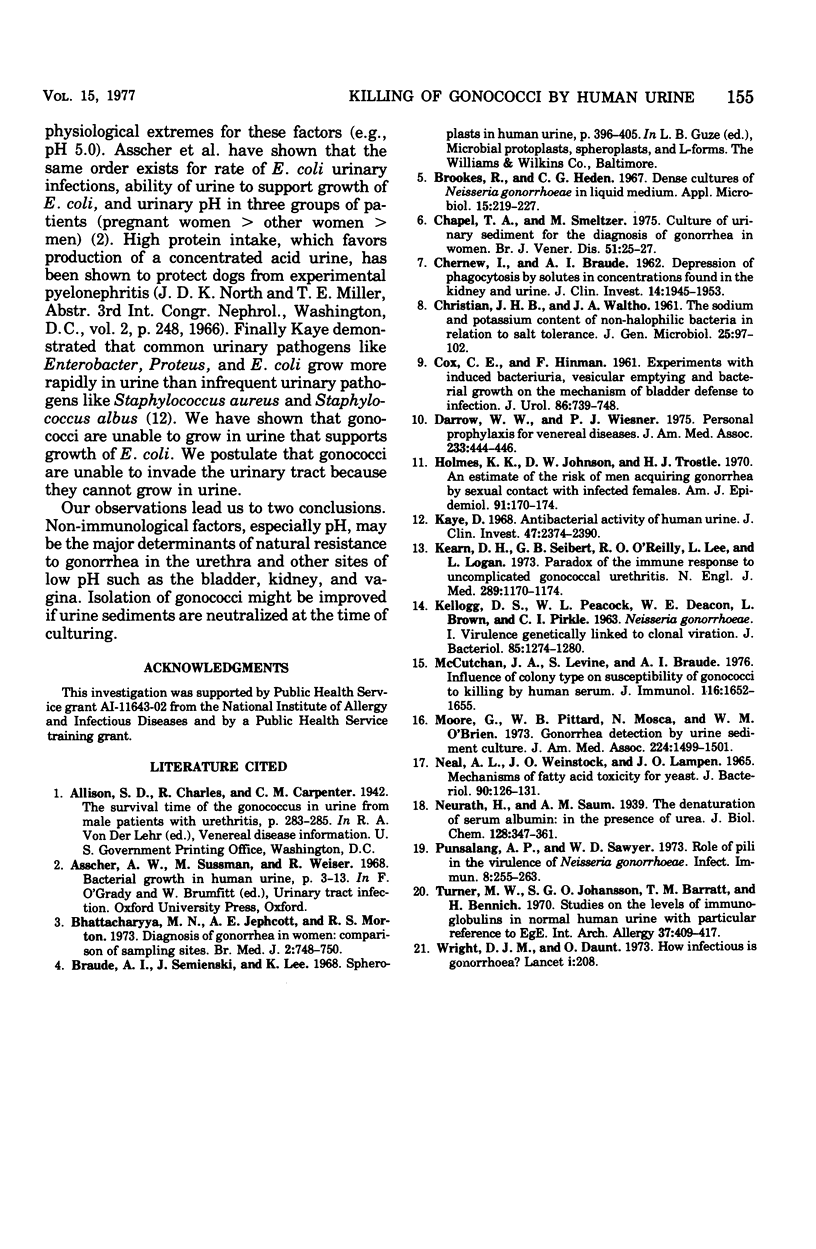
Selected References
These references are in PubMed. This may not be the complete list of references from this article.
- Bhattacharyya M. N., Jephcott A. E., Morton R. S. Diagnosis of gonorrhoea in women: comparison of sampling sites. Br Med J. 1973 Jun 30;2(5869):748–750. doi: 10.1136/bmj.2.5869.748. [DOI] [PMC free article] [PubMed] [Google Scholar]
- Brookes R., Hedén C. G. Dense cultures of Neisseria gonorrhoeae in liquid medium. Appl Microbiol. 1967 Mar;15(2):219–223. doi: 10.1128/am.15.2.219-223.1967. [DOI] [PMC free article] [PubMed] [Google Scholar]
- CHERNEW I., BRAUDE A. I. Depression of phagocytosis by solutes in concentrations found in the kidney and urine. J Clin Invest. 1962 Oct;41:1945–1953. doi: 10.1172/JCI104652. [DOI] [PMC free article] [PubMed] [Google Scholar]
- CHRISTIAN J. H., WALTHO J. A. The sodium and potassium content of non-halophilic bacteria in relation to salt tolerance. J Gen Microbiol. 1961 May;25:97–102. doi: 10.1099/00221287-25-1-97. [DOI] [PubMed] [Google Scholar]
- COX C. E., HINMAN F., Jr Experiments with induced bacteriuria, vesical emptying and bacterial growth on the mechanism of bladder defense to infection. J Urol. 1961 Dec;86:739–748. doi: 10.1016/S0022-5347(17)65257-1. [DOI] [PubMed] [Google Scholar]
- Chapel T. A., Smeltzer M. Culture of urinary sediment for the diagnosis of gonorrhoea in women. Br J Vener Dis. 1975 Feb;51(1):25–27. doi: 10.1136/sti.51.1.25. [DOI] [PMC free article] [PubMed] [Google Scholar]
- Darrow W. W., Wiesner P. J. Personal prophylaxis for venereal diseases. JAMA. 1975 Aug 4;233(5):444–446. [PubMed] [Google Scholar]
- Holmes K. K., Johnson D. W., Trostle H. J. An estimate of the risk of men acquiring gonorrhea by sexual contact with infected females. Am J Epidemiol. 1970 Feb;91(2):170–174. doi: 10.1093/oxfordjournals.aje.a121125. [DOI] [PubMed] [Google Scholar]
- KELLOGG D. S., Jr, PEACOCK W. L., Jr, DEACON W. E., BROWN L., PIRKLE D. I. NEISSERIA GONORRHOEAE. I. VIRULENCE GENETICALLY LINKED TO CLONAL VARIATION. J Bacteriol. 1963 Jun;85:1274–1279. doi: 10.1128/jb.85.6.1274-1279.1963. [DOI] [PMC free article] [PubMed] [Google Scholar]
- Kaye D. Antibacterial activity of human urine. J Clin Invest. 1968 Oct;47(10):2374–2390. doi: 10.1172/JCI105921. [DOI] [PMC free article] [PubMed] [Google Scholar]
- Kearns D. H., Seibert G. B., O'Reilly R., Lee L., Logan L. Paradox of the immune response to uncomplicated gonococcal urethritis. N Engl J Med. 1973 Nov 29;289(22):1170–1174. doi: 10.1056/NEJM197311292892205. [DOI] [PubMed] [Google Scholar]
- McCutchan J. A., Levine S., Braude A. I. Influence of colony type on susceptibility of gonococci to killing by human serum. J Immunol. 1976 Jun;116(6):1652–1655. [PubMed] [Google Scholar]
- Moore G., Pittard W. B., 3rd, Mosca N., O'Brien W. M. Gonorrhea detection by urine sediment culture. JAMA. 1973 Jun 11;224(11):1499–1501. [PubMed] [Google Scholar]
- Neal A. L., Weinstock J. O., Lampen J. O. Mechanisms of Fatty Acid Toxicity for Yeast. J Bacteriol. 1965 Jul;90(1):126–131. doi: 10.1128/jb.90.1.126-131.1965. [DOI] [PMC free article] [PubMed] [Google Scholar]
- Punsalang A. P., Jr, Sawyer W. D. Role of pili in the virulence of Neisseria gonorrhoeae. Infect Immun. 1973 Aug;8(2):255–263. doi: 10.1128/iai.8.2.255-263.1973. [DOI] [PMC free article] [PubMed] [Google Scholar]
- Turner M. W., Johansson S. G., Barratt T. M., Bennich H. Studies on the levels of immunoglobulins in normal human urine with particular reference to IgE. Int Arch Allergy Appl Immunol. 1970;37(4):409–417. doi: 10.1159/000230803. [DOI] [PubMed] [Google Scholar]
- Wright D. J., Daunt O. How infectious is gonorrhoea? Lancet. 1973 Jan 27;1(7796):208–208. doi: 10.1016/s0140-6736(73)90047-0. [DOI] [PubMed] [Google Scholar]


